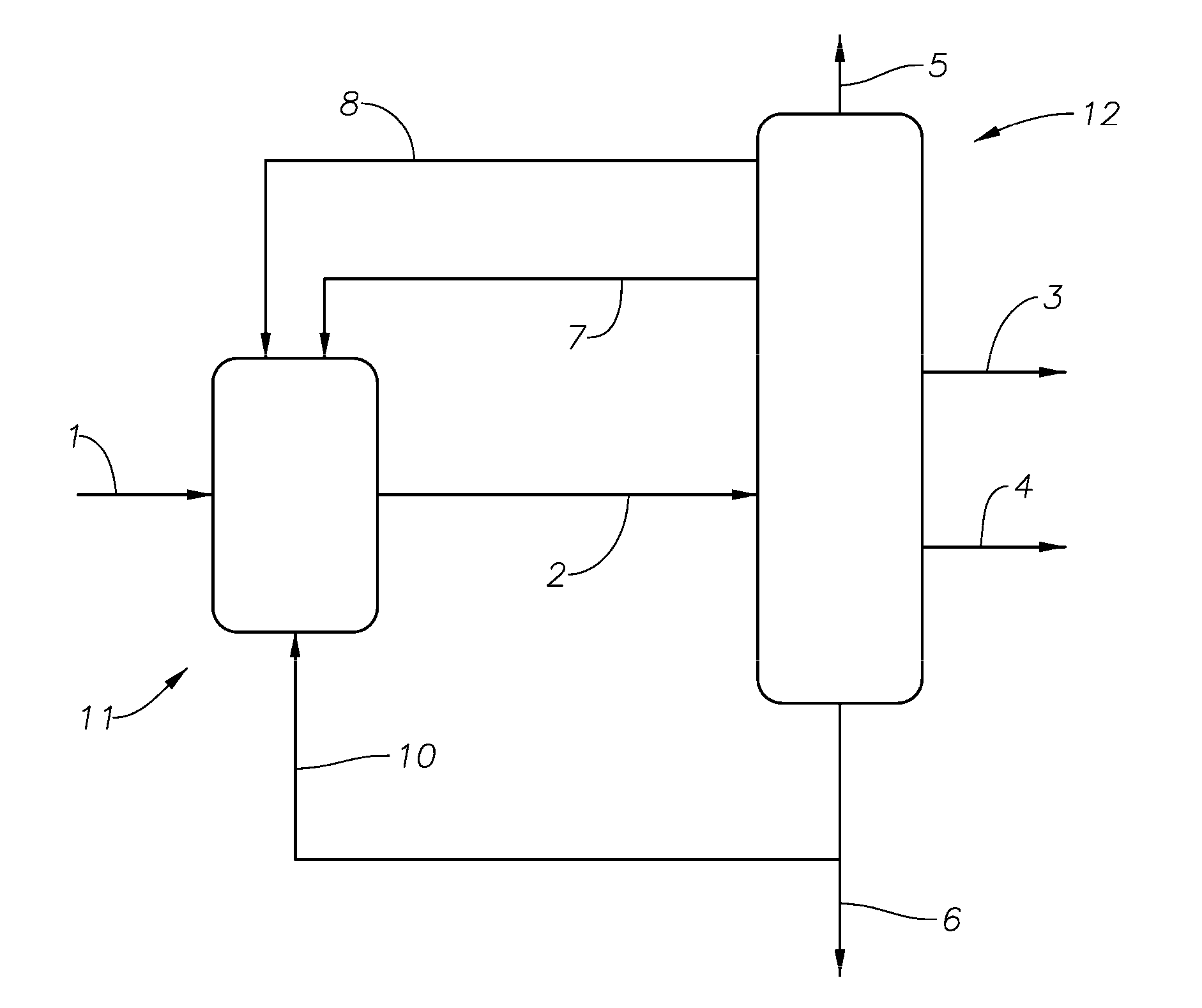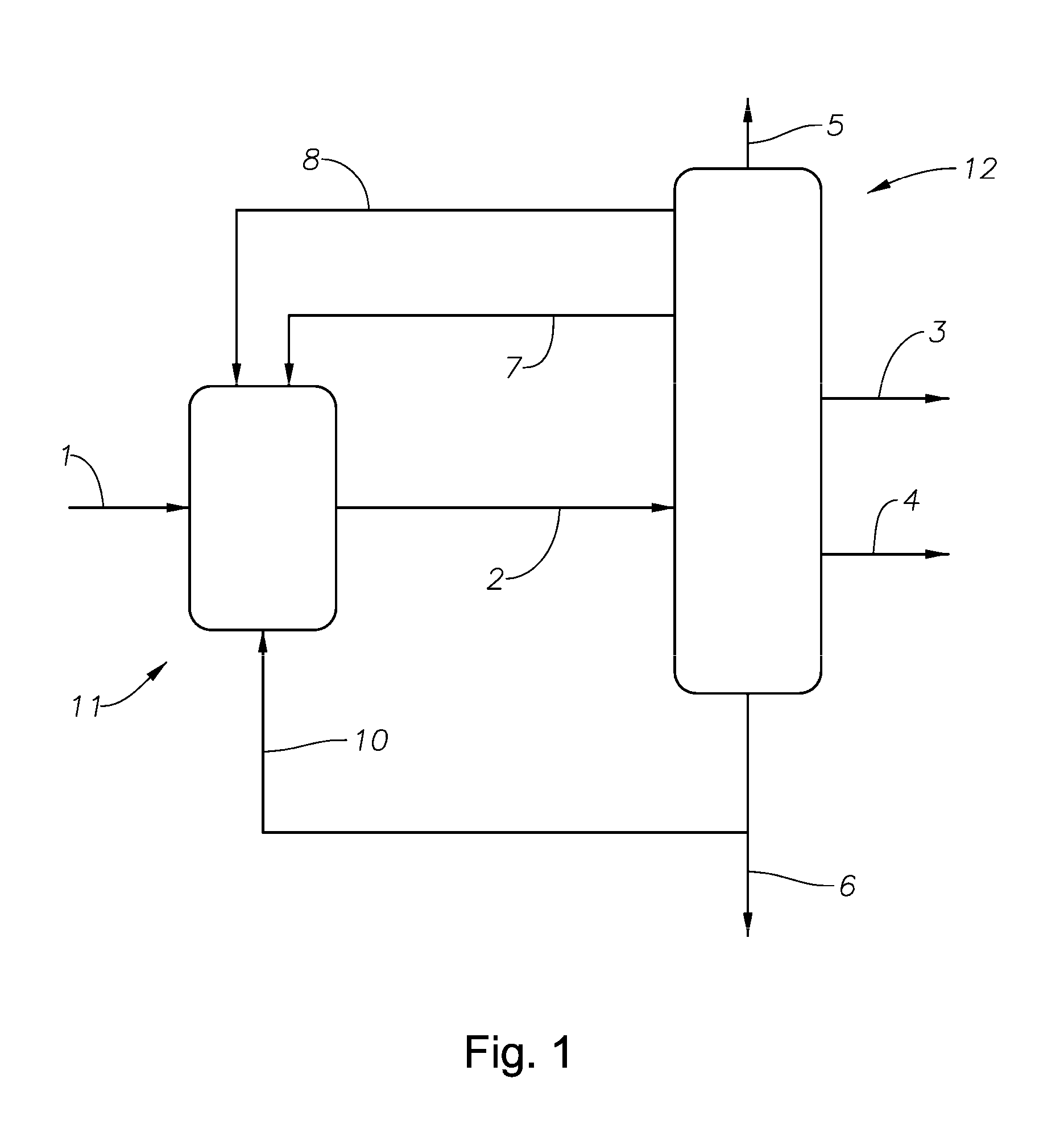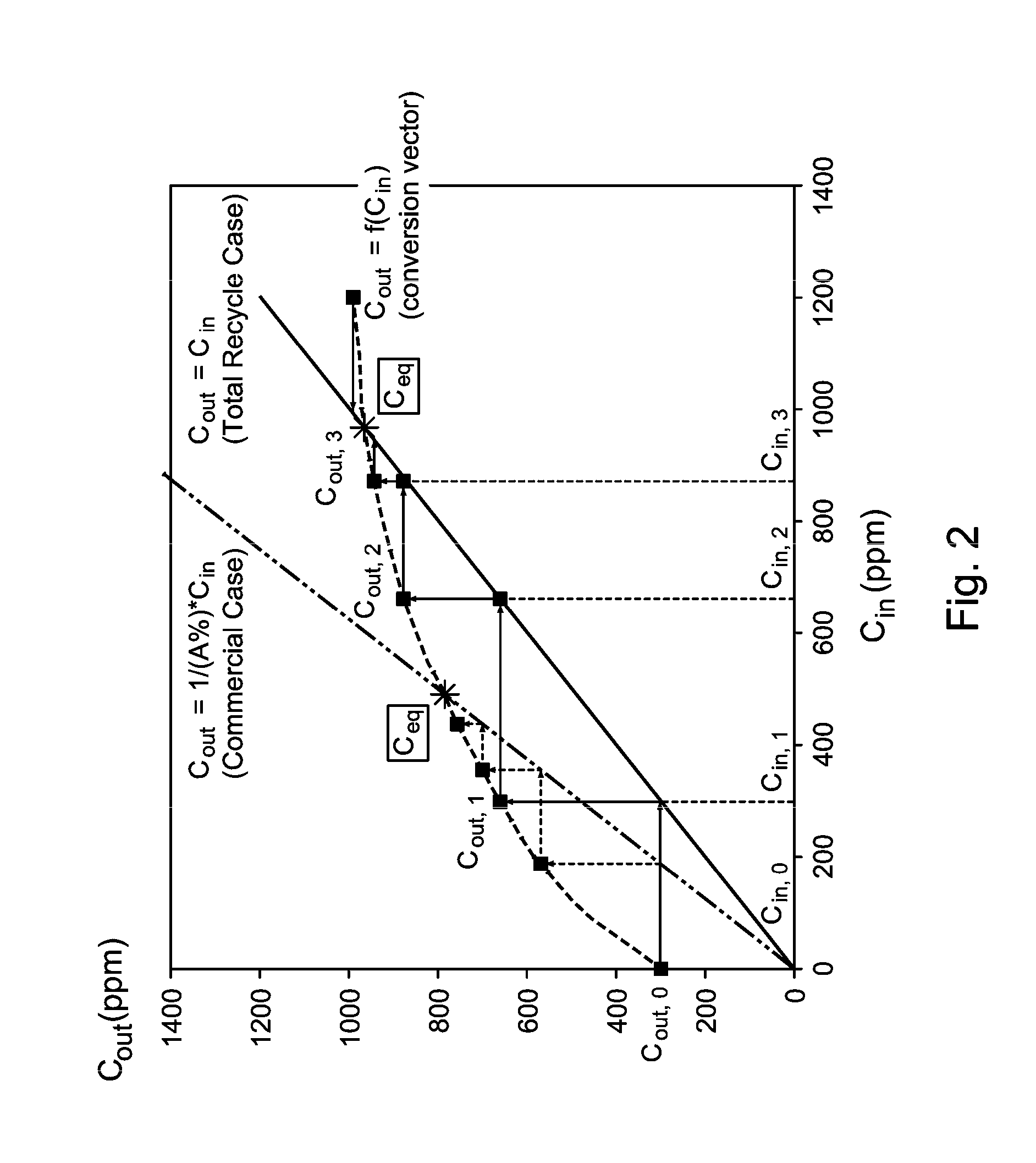Alkylation process
a technology of alkylation process and alkylation catalyst, which is applied in the direction of hydrocarbons, chemistry apparatus and processes, organic chemistry, etc., can solve the problems of high operational cost, undesirable oxygenate by, and limited yield
- Summary
- Abstract
- Description
- Claims
- Application Information
AI Technical Summary
Benefits of technology
Problems solved by technology
Method used
Image
Examples
example 1
Oxygenate Equilibrium Concentrations
[0047]The alkylation reaction in a reactor system according to FIG. 1 is operated at a WHSV (weight hourly space velocity) of 2. FIG. 3 illustrates a plot of oxygenate equilibrium concentrations (“process model”) as compared with “full recycle”, which is the amount of the specific oxygenate exiting the reactor using completely fresh feed and no recycle.
example 2
Oxygenate Conversion at Standard Conditions
[0048]FIG. 4 is a plot of oxygenate conversion at their feed concentrations shown in Table 1, below. At hydrocarbon WHSV=2, H2O / HC=2 (mol:mol), all oxygenate concentrations in the feed are higher than their equilibrium concentrations and they all showed positive conversion.
[0049]
TABLE IFeed BlendEquilibriumConcentration,Concentration,OxygenatesppmwppmwFormaldehyde25002132Acetaldehyde2000484Propaldehyde20041Acetone20002082-Butanone20089DME1000245Ethano20002-Propanol2002Formic acid2000Acetic acid2003Propanoic acid2000Butanoic acid2000Benzoic acid2000Tolui acid2000Phenol2002M-pheno20033DM-Phenol20057.
example 3
Reactor Condition Impacts on MTAM Oxygenate Conversion
[0050]In this example, tests were conducted at three different conditions, HC (hydrocarbon) WHSV=1.6 and H2O / HC=0.5, HC WHSV=2 and H2O / HC=2, and HC WHSV=8 and H2O / HC=2. The oxygenate concentrations in the feed are the same as in Example 3. The residence time ranks in the order of WHSV=1.6 and H2O / HC=0.5>WHSV=2 and H2O / HC=2>WHSV=8 and H2O / HC=2. The results shown in FIG. 5 suggest that oxygenate conversion is a function of their residence time. Oxygenate conversion are high for process conditions with long residence time and low for process conditions with short residence time.
PUM
| Property | Measurement | Unit |
|---|---|---|
| temperature | aaaaa | aaaaa |
| pressure | aaaaa | aaaaa |
| temperature | aaaaa | aaaaa |
Abstract
Description
Claims
Application Information
 Login to View More
Login to View More - R&D
- Intellectual Property
- Life Sciences
- Materials
- Tech Scout
- Unparalleled Data Quality
- Higher Quality Content
- 60% Fewer Hallucinations
Browse by: Latest US Patents, China's latest patents, Technical Efficacy Thesaurus, Application Domain, Technology Topic, Popular Technical Reports.
© 2025 PatSnap. All rights reserved.Legal|Privacy policy|Modern Slavery Act Transparency Statement|Sitemap|About US| Contact US: help@patsnap.com



